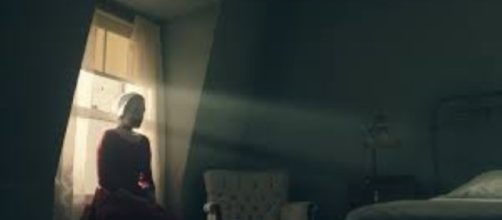Can a book be made into a movie to the book’s advantage? Literary critic George Bluestone doesn’t think so. In his essay “Novels into Film,” he says that the written word and movies may seem compatible, but they’re “secretly hostile. As far as he’s concerned, the literary doesn’t translate well into screen language. That’s his opinion, not mine.
Horror story
To be fair, Bluestone penned his view in 1957 and obviously couldn’t have seen Margaret Atwood’s novel “Handmaid’s Tale” that Hulu made into a television series this year. So he can be forgiven for saying that “any adaptation is not concerned with the unique aspects of the novel, but only with events in it.” Seeing the Atwood story in a TV movie is seeing more than plot.
In fact, the visual version of the novel makes the horror more visceral - and more than that - downright symphonic for its lighting. By beautifying the horror with a luminous glow, the tale becomes extra horrific by contrast.
Pretty picture
That gorgeous light fills the paintings by 17th-century Dutch artist Johannes Vermeer. Consider his “Young Woman with a Water Jug,” which describes a figure standing by a window in a soft light passed through her starched white bonnet. In fact, the edges of all his picture parts are similarly softened. The upshot is that the radiance takes on its own shape and you can be seen that in the film, too.
Remembering
The film looks so much like a Vermeer that I wasn’t surprised to read that cinematographer Colin Watkinson shot the story to the specs of director Reed Moran, who purposely pinned the scenes to the painter’s work.
“Vermeer was a great reference,” he said, pointing in particular to the scene of Offred, the lead handmaid (Elizabeth Moss) in her room recounting in a voice-over her new life as a sex-slave, and how she was captured and her daughter wrenched from her – all in in a gossamer-light to connote memory. This is the picture of Vermeer’s painting “Woman Reading a Letter.”
Layering
Moran even added smoke to this scene to give the luminescence weight and hold the mood.
Watkinson said that Moran sought to emulate the way Vermeer applied transparent glazes of the color layer by layer to allow the underlying hues to shine through and lend life to the light. This is what Watkinson did. He built the light up in layers to create volume and make it a player. Altogether there are three aspects of Vermeer’s painting in the movie: the white bonnets, the cloaks and gowns in either red or blue, and Vermeer’s signature luminescence.
An unexpected equivalence
An almost cold-blooded likeness between Vermeer’s painting and the TV production can be seen in his “The Procuress,” which shows the breasts of a woman being fondled in what looks like a brothel – a curious allusion to the abuses the handmaids endured.


